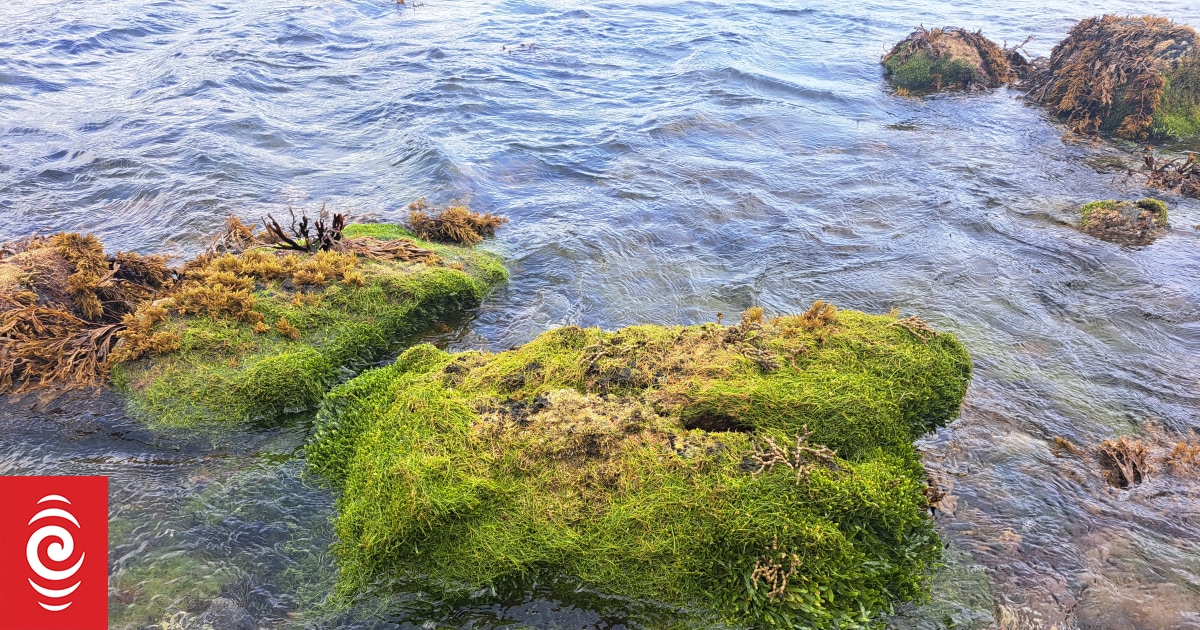At Whangārei Harbour’s entrance, a small, uninhabited island holds a large mystery. The Frenchman has a baffling door, concreted firmly shut, but Whangārei locals believe they can unlock the riddle. Denise Piper reports.
Long-time Whangārei locals believe they know the answer to the mystery of the concreted door on Frenchman Island, at the entrance to Whangārei Harbour.
The door has been shut tight on its history, with theories ranging from a link to the area’s 1860s smuggling past to its World War II association.
Stuff’s appeal for information on The Frenchman has yielded plenty of response.
READ MORE:
* Mysterious Whangārei island doorway holds tight to secret past
* Hundertwasser Art Centre in Whangārei touted as ‘new national asset’
* What it’s like to make a career in the dangerous, underground world of tunnels
Craig McTavish recalled his father, Doug McTavish, telling him in the 1960s the doorway was built as a joke by some workers from a local concrete firm, after having too many beers one Christmas.
Construction of “the door to nowhere” had to be kept quiet as the workers had stolen the concrete from their boss, he said.
Denise Piper/Stuff
The Frenchman has a mysterious doorway, sealed in concrete, which could simply be a joke “door to nowhere”.
However, veteran Arthur Gilberd told his Raumanga tenant Peter Mayne he was stationed on the island during World War II.
Frenchman Island used to hold a small radio room, where watchers could look for enemy ships entering the harbour and radio any warnings to the gun emplacement at nearby Bushby Head.
With the door concealed on the harbour-side of the island, the aim was to set a trap for enemy ships, Mayne recalled being told.
Another local, Blake Manihera, also recalled the door being used in an attempt to set a trap during WWII.
Denise Piper/Stuff
Just ashore from Whangārei Harbour island The Frenchman is a World War II gun emplacement and battery observation post, which overlook the harbour entrance.
Growing up in Onerahi in the 1950s, he was told the Frenchman’s fake concrete door was made to look like an ammunition store.
The aim was to lure fire from any enemy ships coming up the harbour, giving time for the men at the gun emplacement on Bushby Head to train their sights on the ship.
However, the majority of Whangārei locals say the door was never a door at all but a small platform to store acetylene gas cylinders for The Frenchman’s navigational light.
Frenchman Island housed the first navigational beacon in Whangārei Harbour, first lit in 1913.
Denise Piper/Stuff
The Frenchman, named because it looks like a Napoleon-era Frenchman’s helmet, has housed a navigational beacon since 1913.
Ian Fisher, who has been boating around The Frenchman for more than 70 years, said he remembered seeing the door being used in the 1950s.
While aboard his father’s tug, Opaia, Fisher saw Whangarei Harbour Board employees using the pilot boat Kumi to maintain the light.
“[The door] and the little recess behind it was used to store acetylene cylinders to fuel the beacon light on top of the Island,” said Fisher, who lived on another Whangārei Harbour island, Matakohe-Limestone Island, from 1949 to 1956.
Matt Conmee, who worked for the Northland Harbour Board in the 1980s, was told by colleagues the “door” was the concrete remains of a shallow locker, built to house the acetylene cylinders.
Denise Piper/Stuff
The Frenchman’s door is likely a platform for acetylene gas cylinders, with the original steel door having disappeared.
The outer door, likely made of steel, has since rotted away or been removed, he said.
Paul Ballantine also agreed the door was a small recess to store the acetylene gas cylinders, with two vertical marks on the back of the doorway made from the cylinders rubbing.
The “acetone light” noted in an 1913 article probably referred to the gas cylinders being part-filled with acetone to stabilise the explosive acetylene gas, he said.
“I often thought, as a kid, that there was a pirate treasure or an armoury of weapons behind that door,” he said.




